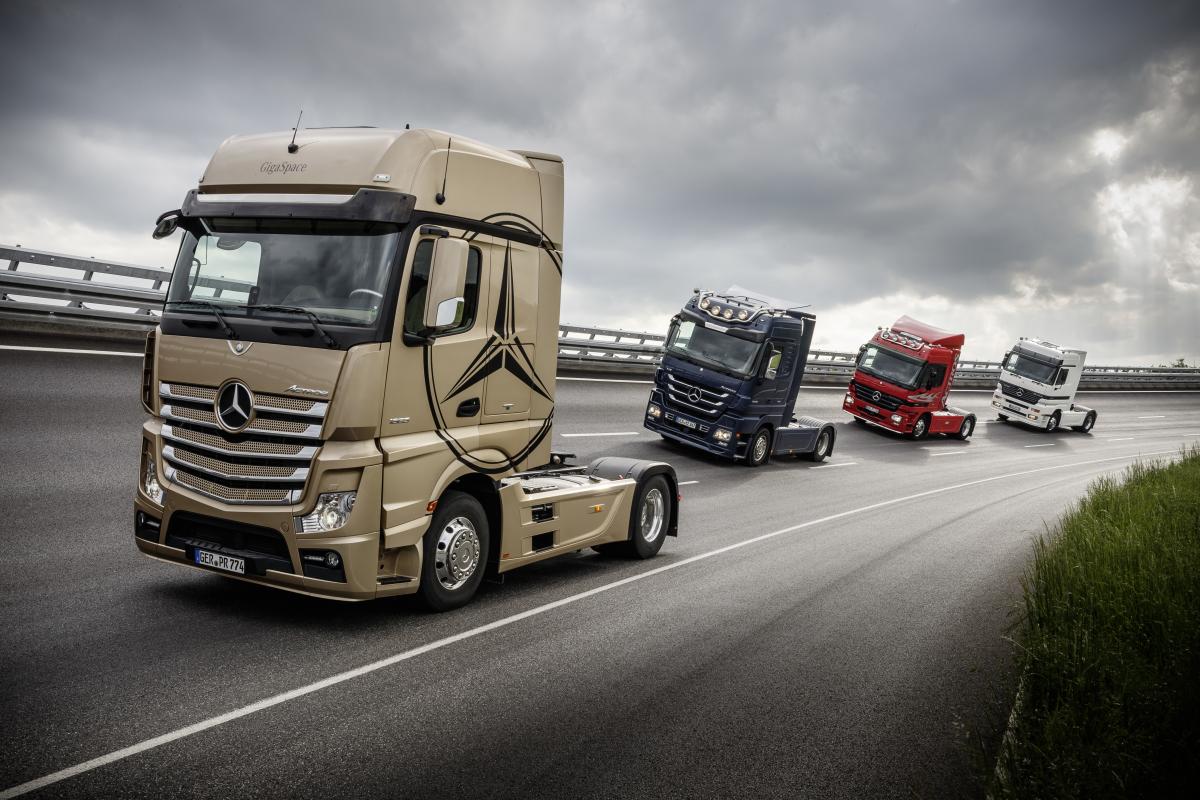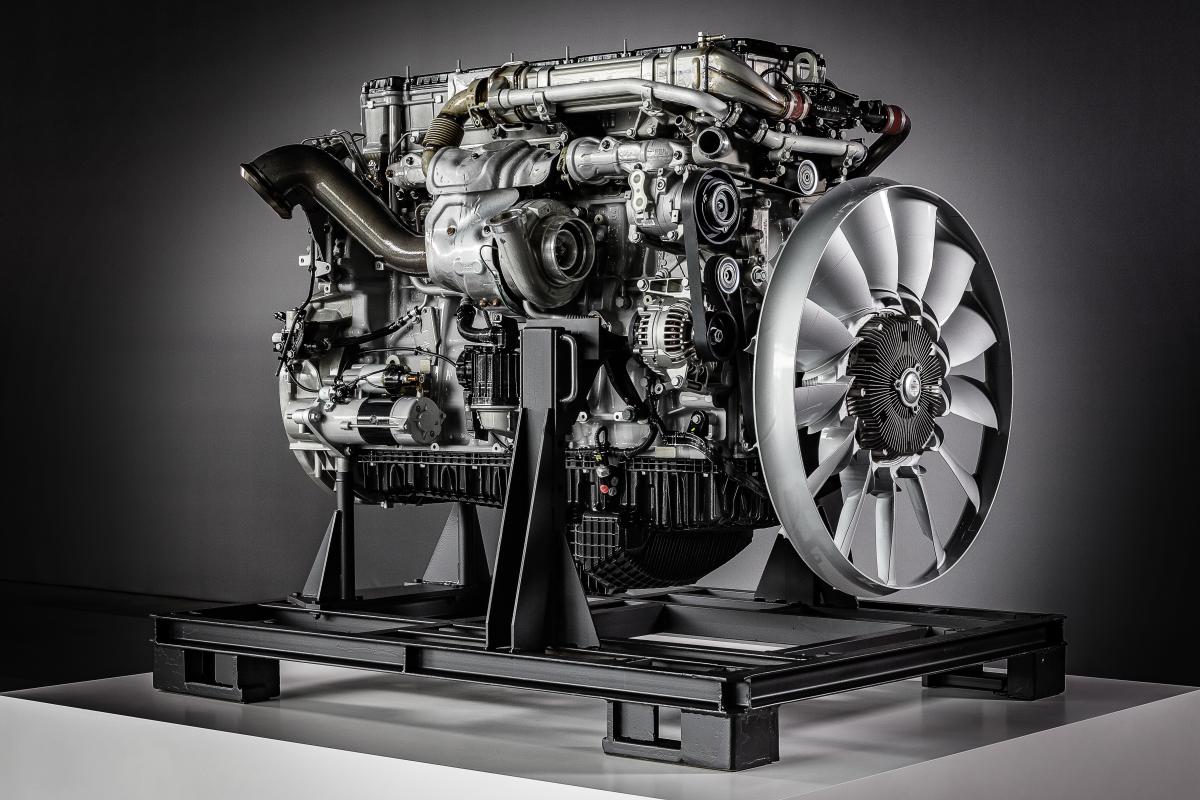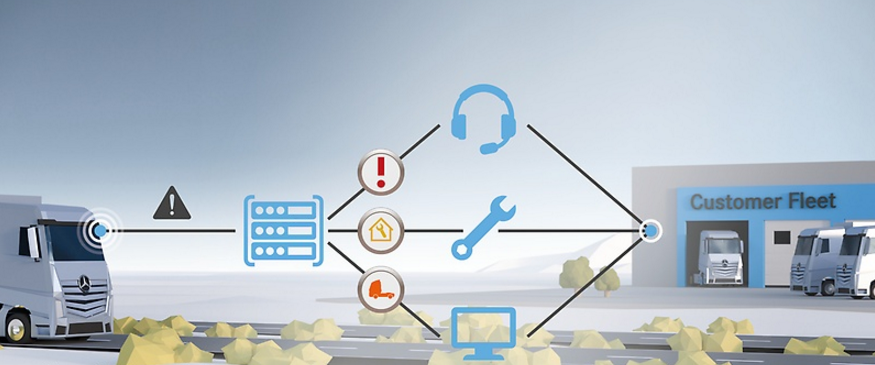IAA Preview Mercedes-Benz Trucks
OM 470: more powerful, more economical and even lower emissions
As featured on Daimler.com | IAA Preview Mercedes-Benz Trucks
OM 470: more powerful, more economical and even lower emissions
Maximum efficiency combined with minimal emissions and outstanding performance: Mercedes-Benz Trucks is optimising its heavy-duty trucks to be exhibited at the IAA commercial vehicles in September 2016. The international motor show, in German known as the Internationale Internationale Automobil-Ausstellung (IAA), is the world’s largest motor show.The latest generation of the OM 470 six-cylinder in-line engine incorporates numerous new developments to achieve a further reduction in fuel consumption.
Even lower on fuel and emissions, even more flexible and, with a new top-of-the-range variant, even more powerful: the latest generation of the Mercedes-Benz OM 470 boasts enhanced performance all-round. The six-cylinder in-line engine with a displacement of 10.7 l benefits both from technical refinements relating to the ongoing development of the larger OM 471 which were introduced in 2015 and from technology specific to the compact model series.
The OM 470 is the most compact of the heavy-duty engines from Mercedes-Benz. It nevertheless features all the defining characteristics of its big brother, the OM 471, combining robust design, with sturdy steel pistons, two overhead camshafts with highly efficient gearing as the drive system, asymmetric exhaust-gas turbocharger, powerful engine brake and the unique X-Pulse common rail injection system with pressure booster.
The top model of the Mercedes-Benz OM 470 engine range is a variant generating an output of 335 kW (456 hp) and a powerful 2200 Nm of peak torque. These figures highlight the outstanding performance of the OM 470. With a specific output of 31.4 kW per litre of engine capacity (42.7 hp/l) and specific torque of 206 Nm/l, the OM 470 is one of the most powerful engines in its size category.
More safety with Active Brake Assist 4
Maximum safety is a fundamental value of the Mercedes-Benz brand and an essential element of its DNA. A major proportion of the safety systems available in trucks today were premiered in a vehicle bearing the Mercedes star. The spectrum ranges from the ABS anti-lock braking system to Active Brake Assist, the emergency braking system. While safety systems to date have served first and foremost to avoid serious accidents on motorways and highways, with Active Brake Assist in its fourth generation and Sideguard Assist – both featuring pedestrian detection - Mercedes-Benz Trucks is opening up a whole new chapter: these systems afford protection above all to the most vulnerable road users - pedestrians and cyclists - as Mercedes-Benz Trucks applies cutting-edge safety technology to urban traffic.
Mercedes-Benz launched Active Brake Assist 1 (ABA 1) ten years ago. Many of these safety systems developed by Mercedes-Benz, such as Lane Keeping Assist, have not only become firmly established on the market - they are now even mandatory for new vehicle registrations in the EU. These systems cover two key causes of accidents such as rear-end collisions and vehicles leaving the carriageway.
With Active Brake Assist 4 and Sideguard Assist, Mercedes-Benz is now tackling the third major cause of accidents involving heavy-duty trucks: accidents in the low speed range when cornering and in the area of junctions. In so doing, Mercedes-Benz is first and foremost addressing accidents in built-up areas and involving the most vulnerable road users - unprotected pedestrians and cyclists.
A revolution in safety technology
When it was introduced ten years ago, Active Brake Assist 1 (ABA 1) from Mercedes-Benz Trucks was the first emergency braking assistant in trucks to brake automatically in response to obstacles. Mercedes-Benz has continued to develop this technology on an ongoing basis. What began in 2006 with emergency braking in response to slower vehicles ahead culminated in the third generation (ABA 3) in 2012 in automatic emergency braking within the system's limits to a standstill, also in response to stationary obstacles. Active Brake Assist has written history in vehicle safety – today, automatically intervening emergency braking assistants are mandatory for newly registered heavy-duty trucks in the EU.
It is not known how many traffic accidents have been avoided with the aid of Active Brake Assist and how many road users' lives it has saved, as it is not possible to count avoided accidents. One thing is certain, however: Active Brake Assist 1-3 from Mercedes-Benz is a major contributory factor to the positive accident record for heavy-duty trucks in Europe.
The next chapter in the Active Brake Assist success story is now unfolding. The current Active Brake Assist 3 from Mercedes-Benz Trucks already surpasses the requirements which will be introduced by the EU in a more stringent standard in November 2018. The new Active Brake Assist 4 with pedestrian protection from Mercedes-Benz represents a further milestone in the development of active safety technologies.
The outstanding feature of Active Brake Assist 4 is that it warns the driver of imminent collisions with pedestrians and simultaneously automatically initiates partial braking. It is the first system of its type worldwide to perform such functions. In so doing, it enables the driver to avoid a collision by means of emergency braking or a steering manoeuvre. The driver can additionally warn endangered pedestrians by sounding the horn.
Active Brake Assist 4 thus constitutes a further development of well-proven Active Brake Assist 3, incorporating an additional warning and partial braking in response to moving pedestrians. Operation of the system and the display set-up correspond to Active Brake Assist 3. In contrast to braking in response to moving and stationary obstacles, partial braking in response to moving pedestrians is not accompanied by a warning cascade, but rather the audible and visible warnings are output simultaneously with partial braking.
View the complete article on www.daimler.com




